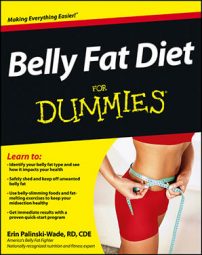Some instant belly-bloating foods to avoid in your diet include the following:
- Carbonated beverages: These gassy drinks fill your belly with air, causing your stomach to look distended and bloated. Instead, drink water or calorie-free beverages that are rich in antioxidants, such as unsweetened green tea with a squeeze of fresh lemon.
- Gassy vegetables: Vegetables that increase gas production, such as cabbage, broccoli, and Brussels sprouts, can cause your stomach to look and feel distended due to a buildup of gas in the gastrointestinal (GI) tract. But you don’t have to give up these vegetables entirely. If you slowly increase your portions of these vegetables over the course of a few weeks, versus all at once, it allows your body to adjust to them, helping to produce less gas during digestion. When eating these gassier options, also be sure to cook them thoroughly (raw vegetables can produce even more gas).
- Gum: Chewing gum may trigger you to swallow air, which can bloat your belly and cause it to look distended. And even though sugar-free gum may sound like a better choice, it actually contains a high amount of sugar alcohols. These alcohols are only partially digested in your body, so they can lead to gas, bloating, and GI upset — all things that cause your belly to look and feel bloated. If you do want to chew gum, try to limit yourself to only one or two pieces per day.
- High-sugar drinks: Drinking a large amount of simple sugars through drinks can lead to spikes in insulin levels. Because an increase in insulin promotes increased fat storage in the abdominal area, you want to avoid these high-sugar drinks. Instead, choose calorie-free beverages, such as water or unsweetened green tea.
Or try this lightly flavored, belly-slimming beverage: Freeze 100 percent fruit juice in an ice cube tray. After the juice cubes are frozen, you can pop one into 12 ounces of water. The juice will slowly melt, infusing the water with all-natural flavor with none of the bloat and only a small number of calories.
- Trans fats: Studies have shown that the intake of trans fats can promote an increase in belly fat. So carefully screen your foods by looking for the words “partially-hydrogenated oil” in the ingredient list. If you see this term, the food you’re selecting contains a source of trans fats. It’s best to avoid foods with trans fats or partially-hydrogenated oils. Foods most likely to contain these belly-busting ingredients include baked goods and pastries, commercially fried foods, snack foods like chips and microwave popcorn, and some instant coffee drinks.
Be sure to look at the ingredient list, not just the number of grams of trans fats listed on the Nutrition Facts Panel. Foods can list 0 grams of trans fats if they contain less than half a gram per serving. Less than half a gram sounds fairly harmless, but if you eat multiple servings, you’re still taking in a significant source of trans fats. In fact, research has shown that as little as 2 grams of trans fats can be detrimental to your health, so read those ingredient lists carefully!
- White flour: Foods that list white flour or enriched flour as the first ingredient are mainly made up of refined carbohydrates. These carbs are digested very quickly, causing spikes in both insulin and blood sugar levels, promoting increased fat storage in the abdominal area. Choose whole-grain options instead. Make sure the first ingredient listed is a whole grain, such as oats or whole wheat.
Be cautious when reading labels. Even if a label says “enriched wheat flour” or “wheat flour,” it’s still a refined flour. You want to see the word “whole” in front of the ingredient, such as “whole-wheat flour,” to ensure you’re getting a true whole grain.

